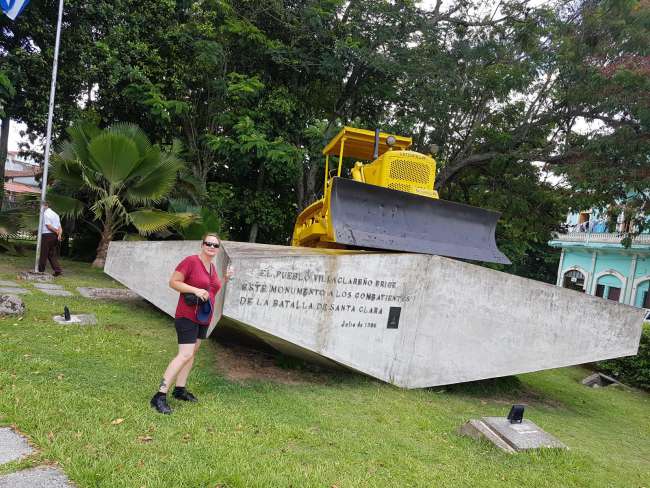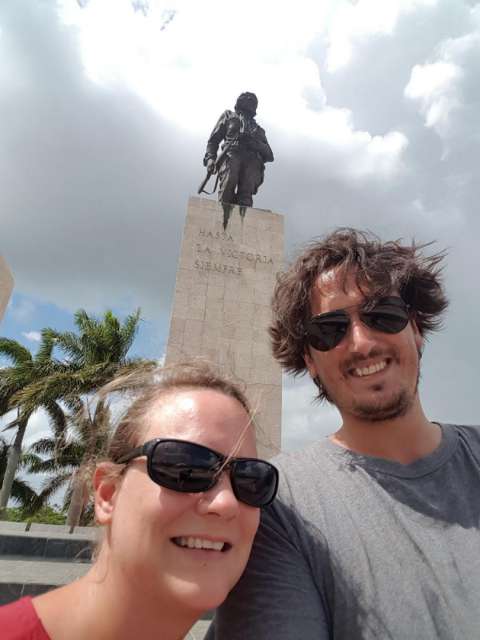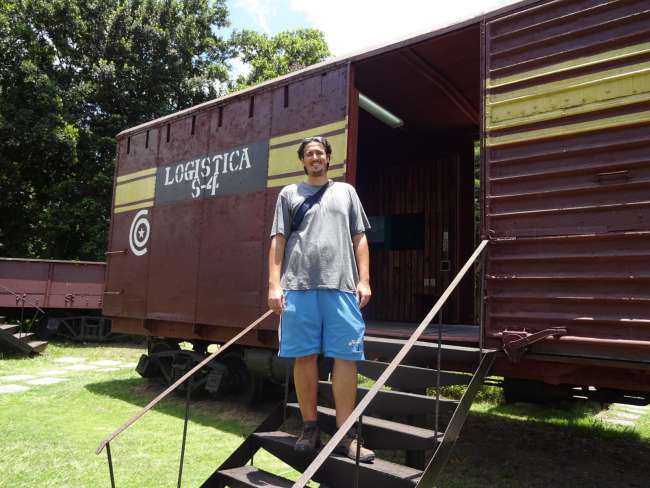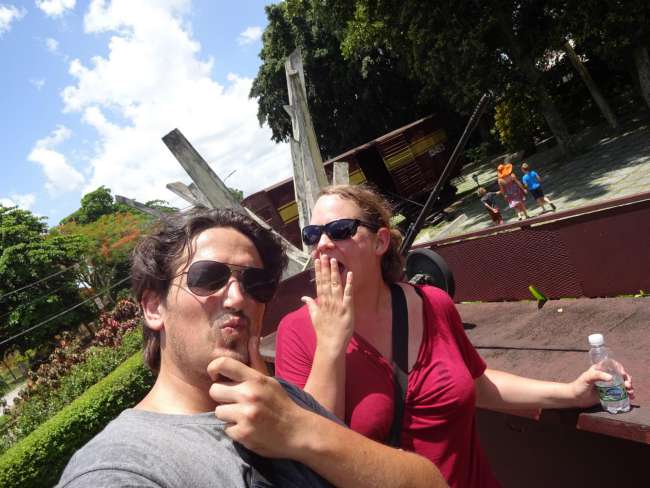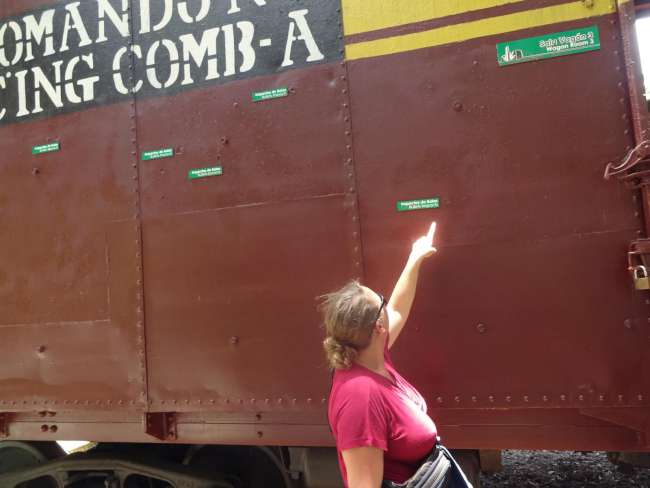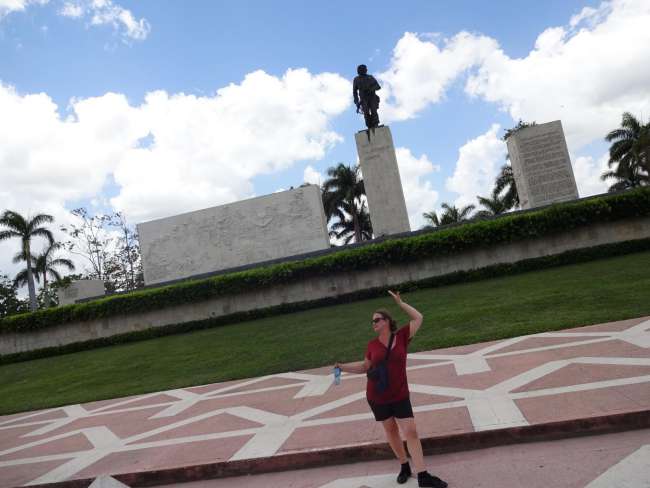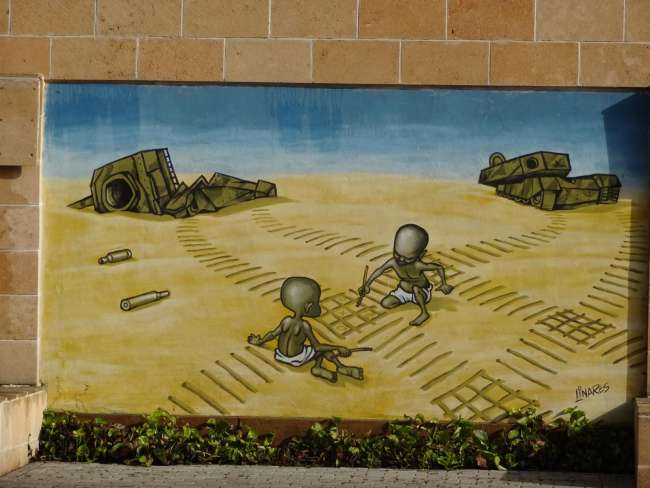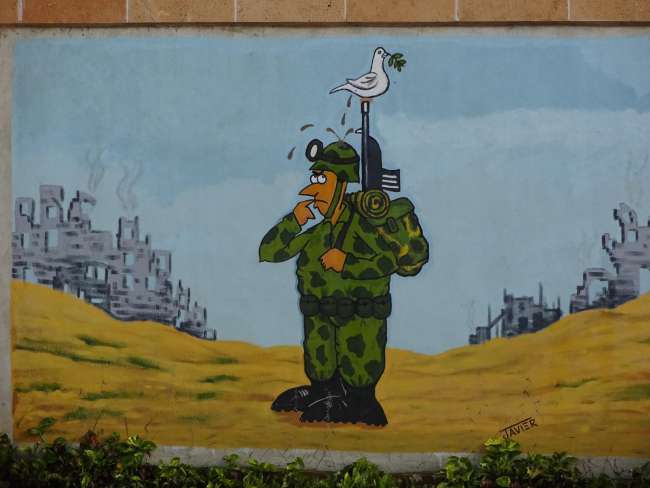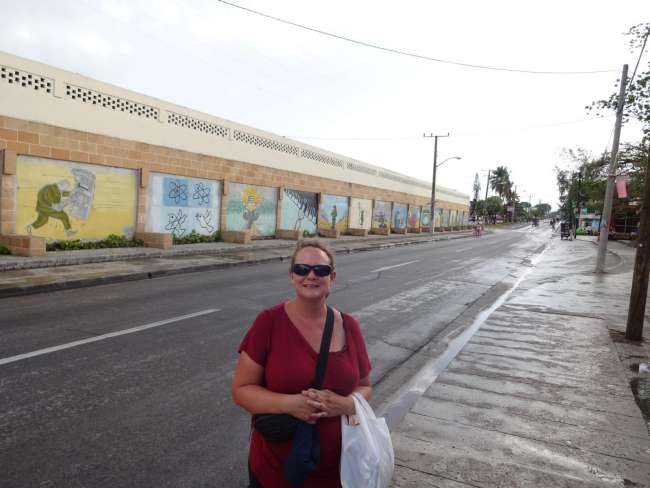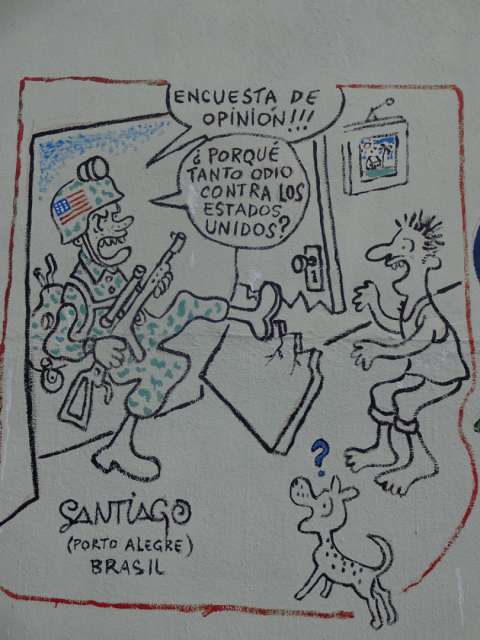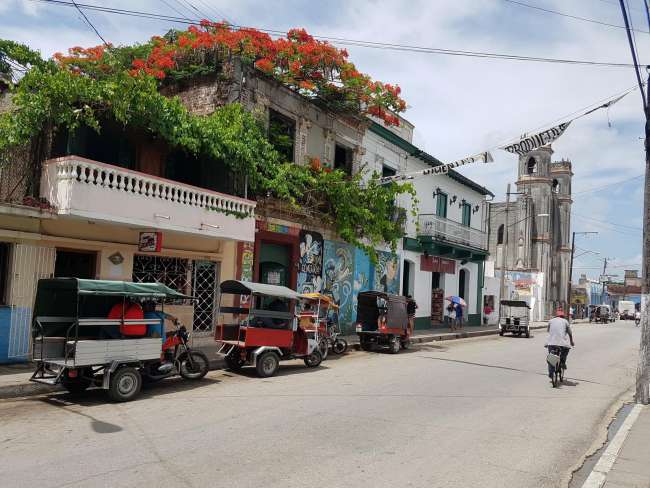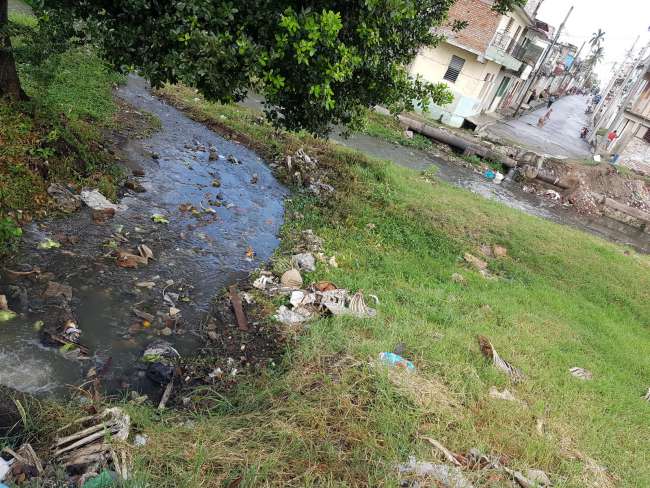Kuba: Santa Clara
게시됨: 16.07.2017
뉴스레터 구독
From Santiago, we took the night bus back to Santa Clara, a 12-hour ride. We mainly came to Santa Clara to visit the mausoleum of Che Guevara (Conjunto Escultórico Comandante Ernesto Che Guevara), and as it quickly turned out, there wasn't much else to see.
The mausoleum was very interesting, unlike Fidel's grave, it was very elaborate and magnificent, with a statue and everything. El Che was buried here together with his comrades who died with him in Bolivia, but many years after his death. The mausoleum also includes a museum about his life, a gallery with 50 personal and previously unknown photographs of him (he also wore the same olive-green frock his whole life), and an eternal flame. Unfortunately, photography was not allowed, but everything was very tasteful and the visit was worth it. Especially since we will probably encounter Che Guevara several more times on our trip. The cult around him is incredibly strong in Cuba, there is hardly a place where there aren't pictures of him, probably one in every living room. His image adorns all postcards and souvenirs, etc. There is even a song about Comandante Che Guevara, which apparently all Cubans can sing by heart. And as we later learned from some enthusiastic Colombians in Viñales, this seems to be the case in all of Latin America, although apparently wearing a Che hat in Colombia does not necessarily mean you are considered a revolutionary... but as a Colombian tourist in Cuba, that seems to be the height of it.
In Santa Clara, we also visited the Monumento a la Toma del Tren Blindado. History was made on the grounds of this small museum on December 29, 1958. Ernesto Che Guevara and a group of revolutionaries derailed an armored military train using a bulldozer and homemade Molotov cocktails. The ensuing battle sealed the fate of the Batista dictatorship and marked the beginning of Fidel Castro's 50-year reign.
In the evening, we went for some mojitos at Club Mejunje, which is touted as a must-see. It was a ruin of a building without a roof but filled with trees, so to speak, an open-air club. It wasn't incredibly spectacular, the same music was playing as everywhere else in Cuba (and at home on Radio Argovia too), and the advertised Saturday night drag show didn't happen either. What stuck with me was the approximately 90-year-old grandpa who earned his money by keeping the toilets clean in the club, even though he could hardly stand upright. There's no retirement pension here. But I gave him an extra tip.
Speaking of toilets, it must be said that the toilets in Cuba are actually quite decent. You have to pay extra for them everywhere, even in restaurants, but there's always someone there cleaning after each guest, and if necessary, they'll flush the toilet with a bucket if the flush doesn't work. Considering that toilets usually ask for 1 CUC (although I usually paid a maximum of 25 cents), it seems to be a fairly well-paid job in Cuba.
Speaking of old people, some of them really have to work hard here. We saw an old man in Trinidad who pushed the luggage of young travelers around on a massive wooden wheelbarrow, which was probably heavier than the luggage itself. Other seniors collect cans and PET bottles from the streets and garbage cans, and sell them back to the manufacturers, as we were told. Even on restaurant terraces, you are approached and asked if you could spare the empty bottle. After a while, you genuinely leave the empty PET bottle on the street without feeling guilty, knowing that the next grandma who comes along will be grateful for it.
뉴스레터 구독
답변 (1)
Manuela
Das eine Bild könnte in Kambodscha entstanden sein.......Tuck Tuck 😉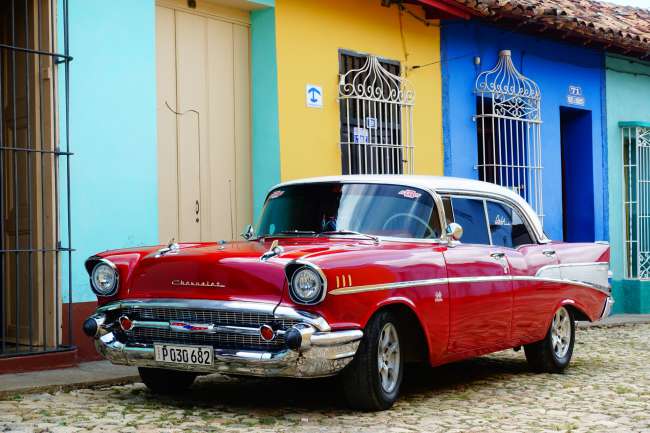
쿠바 여행 보고서


